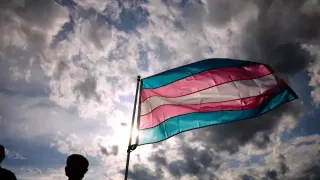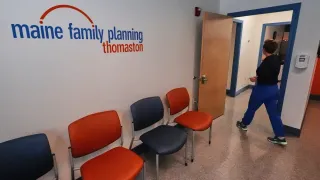September 10, 2016
Mixed Results in New SF HIV Report
Liz Highleyman READ TIME: 5 MIN.
The San Francisco Department of Public Health recently released its annual HIV epidemiology report, showing that the number of newly diagnosed HIV infections continues to fall and people with HIV are achieving viral suppression sooner. But notable disparities remain, with African-Americans not benefitting as much as the city population as a whole.
The September 1 report, which covers data through the end of 2015, shows that the number of new HIV diagnoses in San Francisco fell from 309 in 2014 to 255 in 2015 - the lowest level since the start of the epidemic.
"We're excited to see the progress we're making in reducing new HIV diagnoses overall, but we're not fully reaching our most vulnerable populations," Dr. Susan Buchbinder, director of SFDPH's Bridge HIV, told the Bay Area Reporter. "That's why we are working with community partners and providers to expand innovative, effective programs for communities of color, homeless and marginally housed people, people using drugs, youth, and our aging population living with HIV, focusing not only on HIV, but also on the structural barriers that make communities vulnerable in the first place."
The new findings indicate that San Francisco is making progress toward achieving the goals of its Getting to Zero initiative: zero new HIV infections, zero deaths due to HIV/AIDS, and zero stigma for people living with HIV.
"The overall picture is very good, with San Francisco heading toward zero on every HIV measure," said city Health Director Barbara Garcia. "However, the data also show significant disparities, affirming our focus on efforts for groups who are not experiencing as much progress. Without improvements for these populations, we as a city will not reach zero."
New HIV Cases
New HIV cases have declined in San Francisco over the past decade and the latest report shows that this trend continues. This year's 17 percent drop nearly matches the previous year's 18 percent decrease.
Compared with the United States as a whole, people newly diagnosed with HIV in San Francisco are more likely to be gay men and to be white. Men who have sex with men accounted for the largest proportion of newly diagnosed people - 72 percent (compared to 54 percent nationwide) - while 9 percent are women and 2 percent are transgender people, mostly trans women.
White people accounted for 42 percent of newly diagnosed HIV cases, followed by Latinos (24 percent), African Americans (17 percent), and Asian/Pacific Islanders (12 percent). New infections among Latinos and blacks exceeded their share of the city population (about 15 percent and 6 percent, respectively). Nationwide, African-Americans account for 44 percent of new HIV cases while making up 12 percent of the U.S. population.
Three-quarters of newly diagnosed people in San Francisco were in the 25 to 49 age range, with another 13 percent being 18-24 and 11 percent being age 50 or older. No infants or children have been diagnosed with HIV in San Francisco since 2005.
The Castro, South of Market, and the Tenderloin had the highest concentration of new infections. About 10 percent of newly diagnosed people were homeless and about a quarter did not have public or private health insurance.
"While the 2015 report indicates that the current HIV prevention approach has been successful in some communities, it is clear we need to focus on populations with disparities by addressing the social determinants of health including discrimination, poverty, and homelessness," Tracey Packer, director of Community Health Equity and Promotion at DPH told the B.A.R.
The decline in new HIV cases is likely due to a combination of factors including prompt testing and early antiretroviral treatment, as HIV transmission appears to be all but impossible if viral load is undetectable.
The steepening of the decline in new diagnoses coincided with approval of Truvada (tenofovir/emtricitabine) for PrEP in 2012, but adoption was initially slow and experts commenting on last year's epidemiology report agreed it probably had not yet had much effect.
But PrEP use has expanded rapidly in the past couple of years - a recent informal survey put the number of people on PrEP at more than 6,000 - and it may now be having an impact on new infections.
Fewer Deaths, More People in Care
The total number of deaths due to all causes among people with HIV in the city fell from 218 in 2014 to 197 in 2015, about a 10 percent drop. Four out of ten deaths of HIV-positive people were due to HIV/AIDS-related causes. Other leading causes during 2010-2013 were non-AIDS cancers (14 percent of deaths), drug overdoses (10 percent), and heart diseases (9 percent).
As deaths have declined thanks to effective treatment, the total number of people living with HIV has continued to rise, reaching 15,995 in 2015. Nearly three-quarters are gay men, 6 percent are women, and 2 percent are transgender people.
As a consequence of improved survival, the population of HIV-positive people is aging: currently 60 percent are over age 50 and 23 percent are over 60.
San Francisco continues to do a better job than the U.S. as a whole in moving people through the HIV continuum of care from testing to linkage to care to initiation of antiretroviral treatment to viral suppression.
Overall, 93 percent of people thought to be living with HIV in San Francisco are aware that they are infected. The proportion of people diagnosed late - meaning they progressed to AIDS within three months of an HIV diagnosis - fell to 16 percent in 2014, compared to 23 percent nationwide.
People with HIV are also being linked to care sooner. In 2014 (the latest year with available treatment data), 84 percent of newly diagnosed people were linked to care within one month, up from 72 percent the previous year. Three-quarters reached an undetectable viral load within one year after diagnosis, up from 65 percent. It took a median of 21 days from HIV diagnosis to treatment initiation and 88 days to viral suppression.
Disparities Remain
The new data reveal that some disparities remain - and in fact may be widening. African-Americans, in particular, have not seen the same gains as the city population as a whole and are the only group for whom new diagnoses are stable or rising rather than declining.
Some advocates have suggested that San Francisco's overall good progress in preventing and treating HIV is in part related to its small and dwindling black population, as well as people at risk for and living with HIV being displaced due to the high cost of housing.
Black men and women had the highest rates of new HIV diagnoses and higher mortality compared to the city population as a whole. African-Americans were also more likely to be diagnosed late (22 percent), less likely to be linked to care within a month (67 percent), and less likely to achieve viral suppression within a year (53 percent).
During the next fiscal year the DPH budget for HIV prevention and health services will reach $57.5 million, including $4.3 million allocated to the Getting to Zero initiative, which will largely focus on reducing disparities, according to DPH.
"Our innovative Getting to Zero strategy is working," said gay District 8 Supervisor Scott Wiener. "This steady decline in infections should lead us to accelerate our strategy, and the funds we obtained in the recently adopted city budget will allow us to do so."
"But it's highly concerning that our African-American community is not seeing the same decline," he added. "We have an obligation to ensure that our successful HIV care and prevention strategies reach all communities, and this data is yet another reminder that we have work to do."






